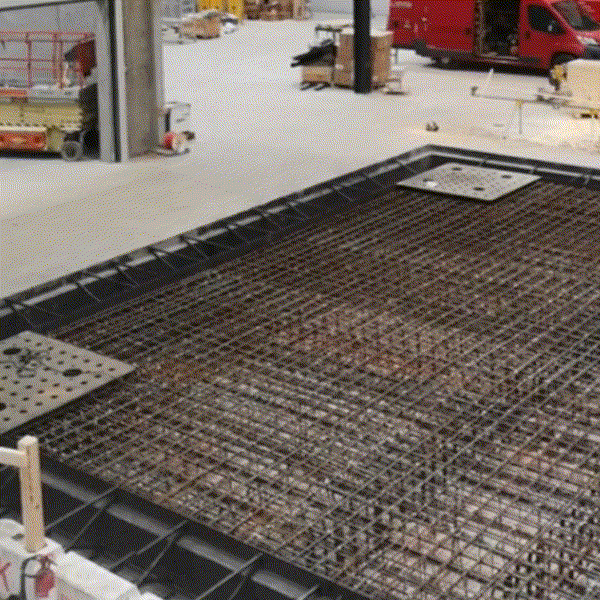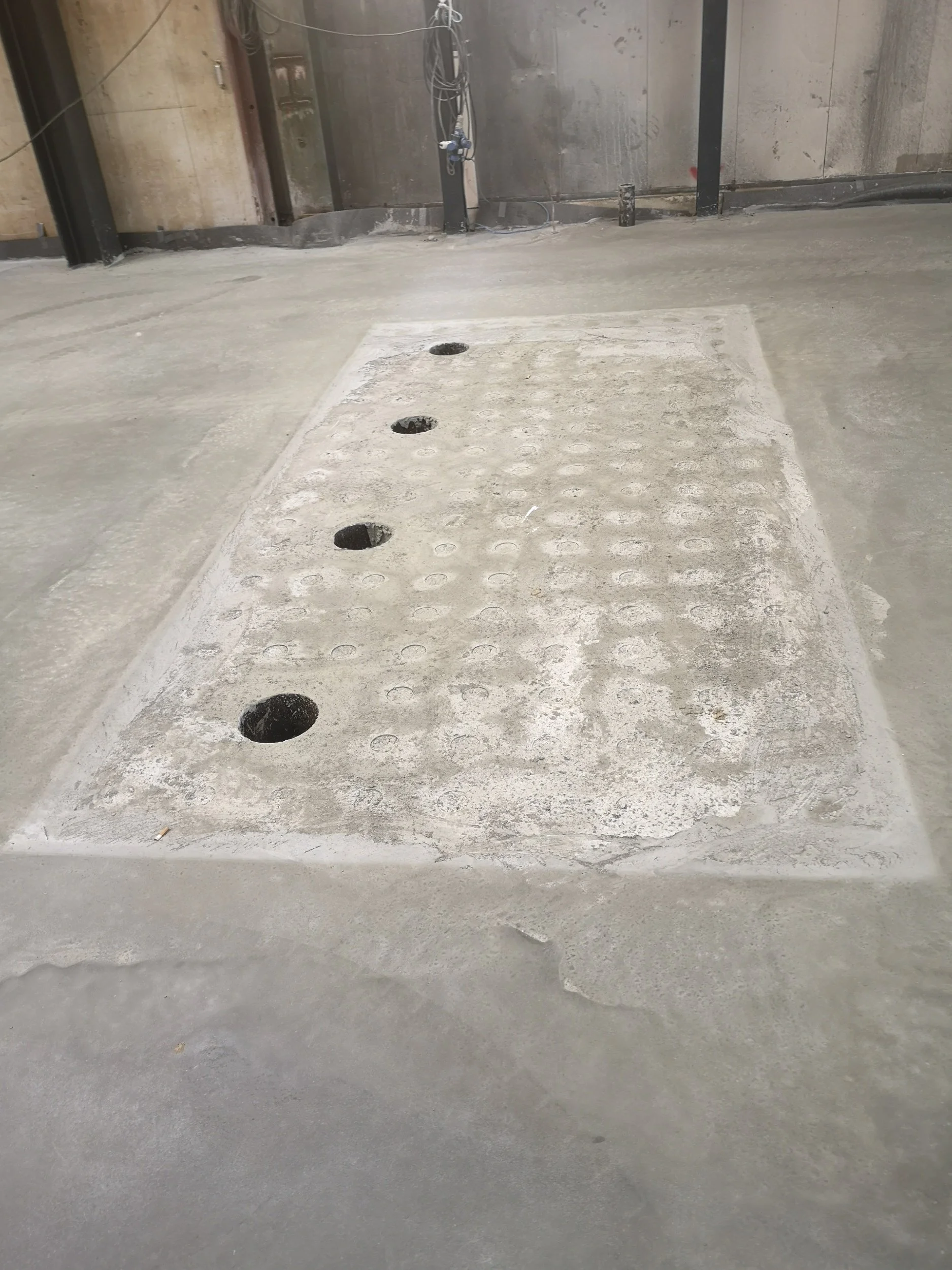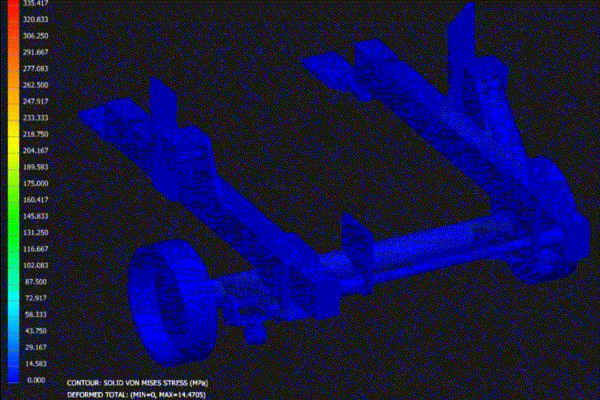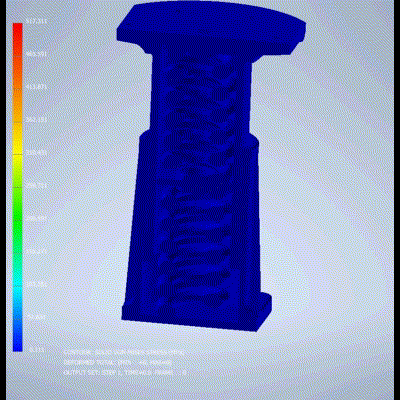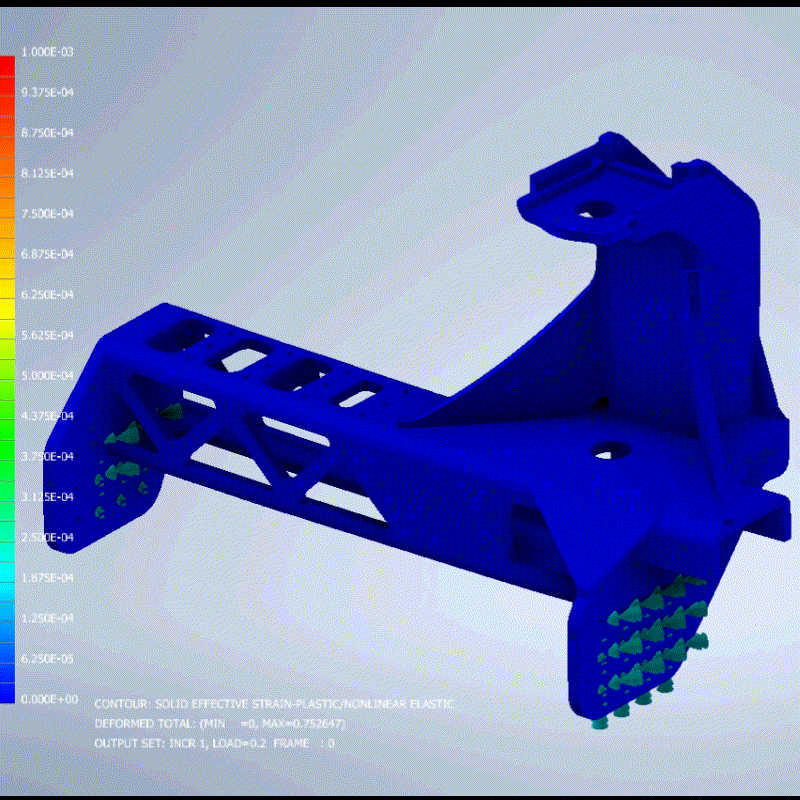Practical engineering philosophy
Industrial foundations, walls and roof.
Reinforced concrete… Takes months, to design and document… years ... “all or nothing”.
no 2nd chances in this line of work…
Rail road, heavy industry.
Railroad spring / damper system.
Concrete truck attachment.
Rear Under Protection (RUPD) - car crash sim.
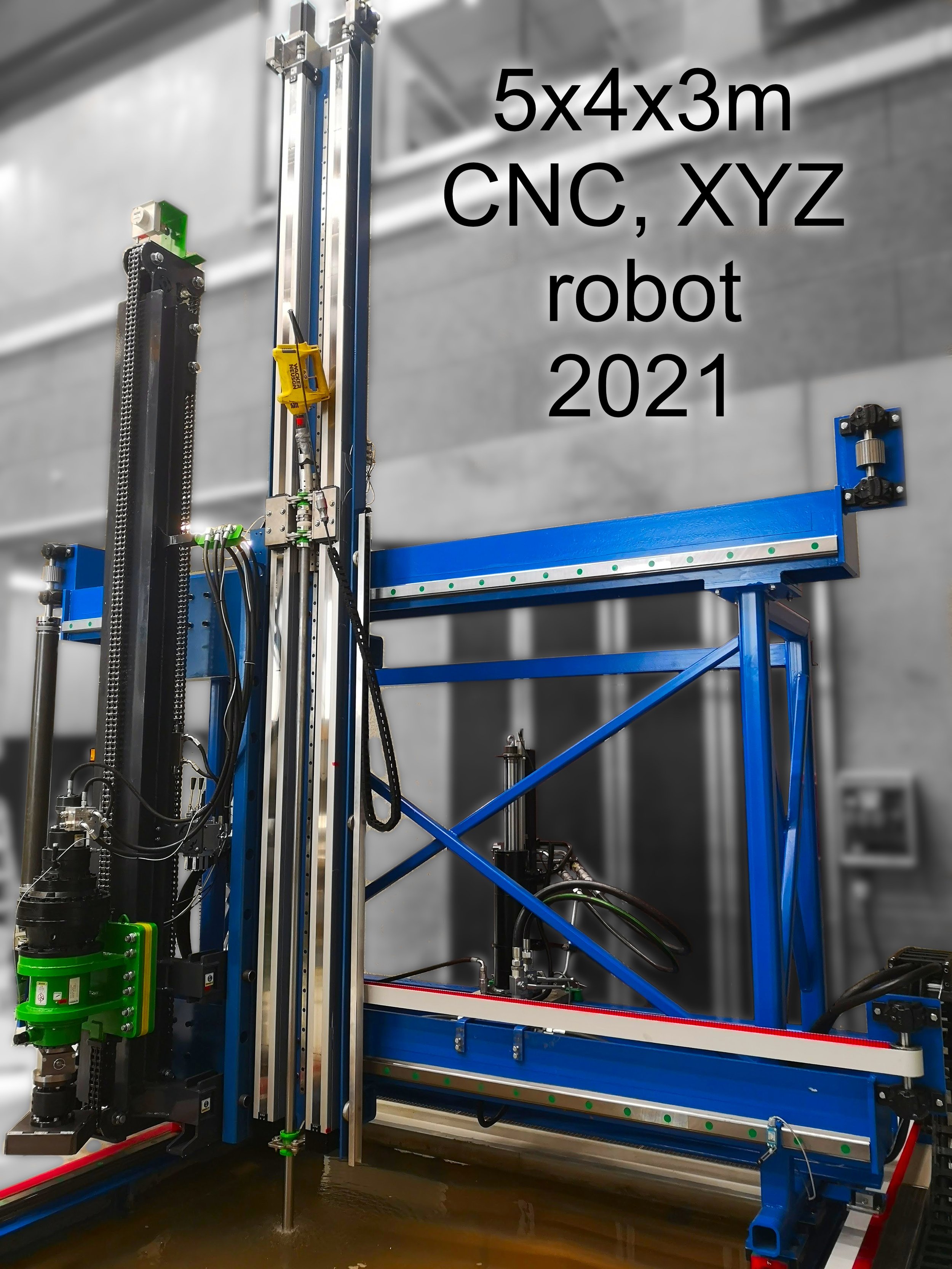
2tonnes heavy, 5m tall CNC machine.
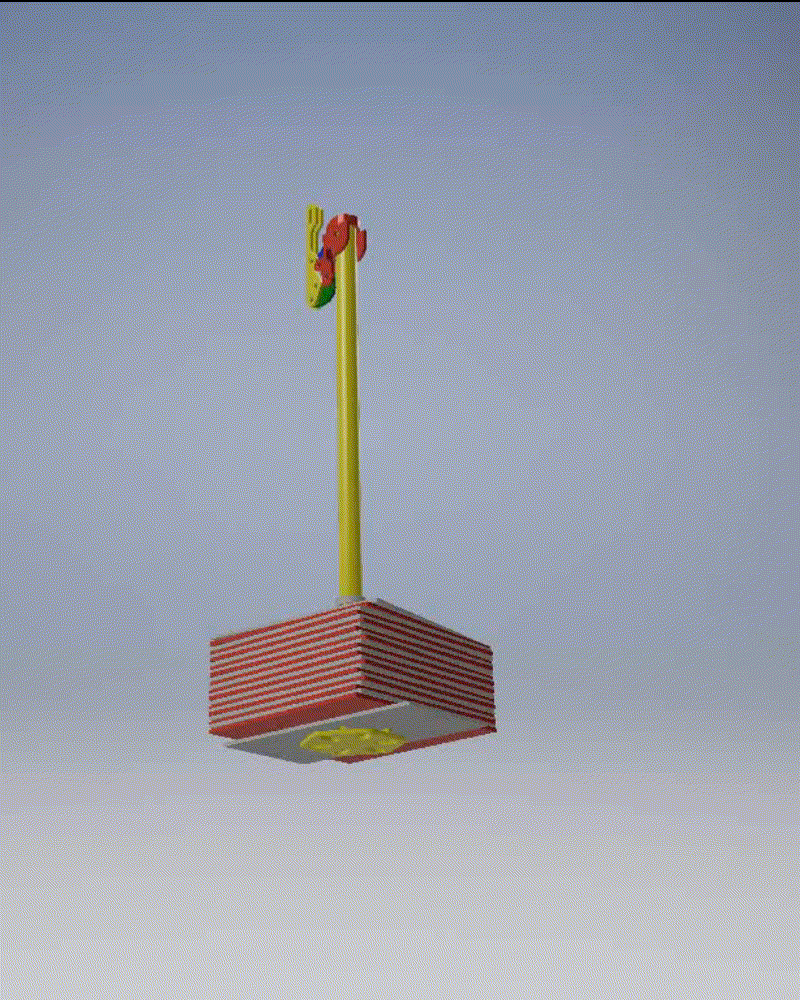
A real patent... :)
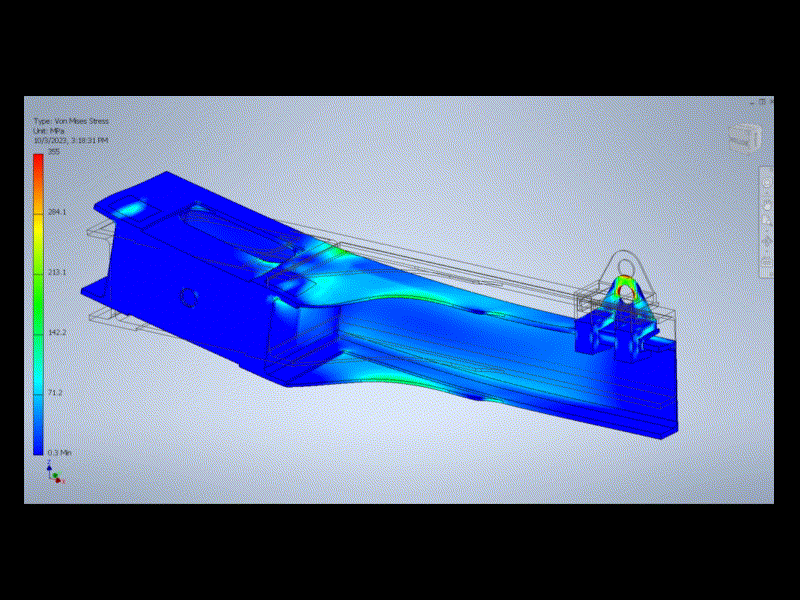
Preliminary design.
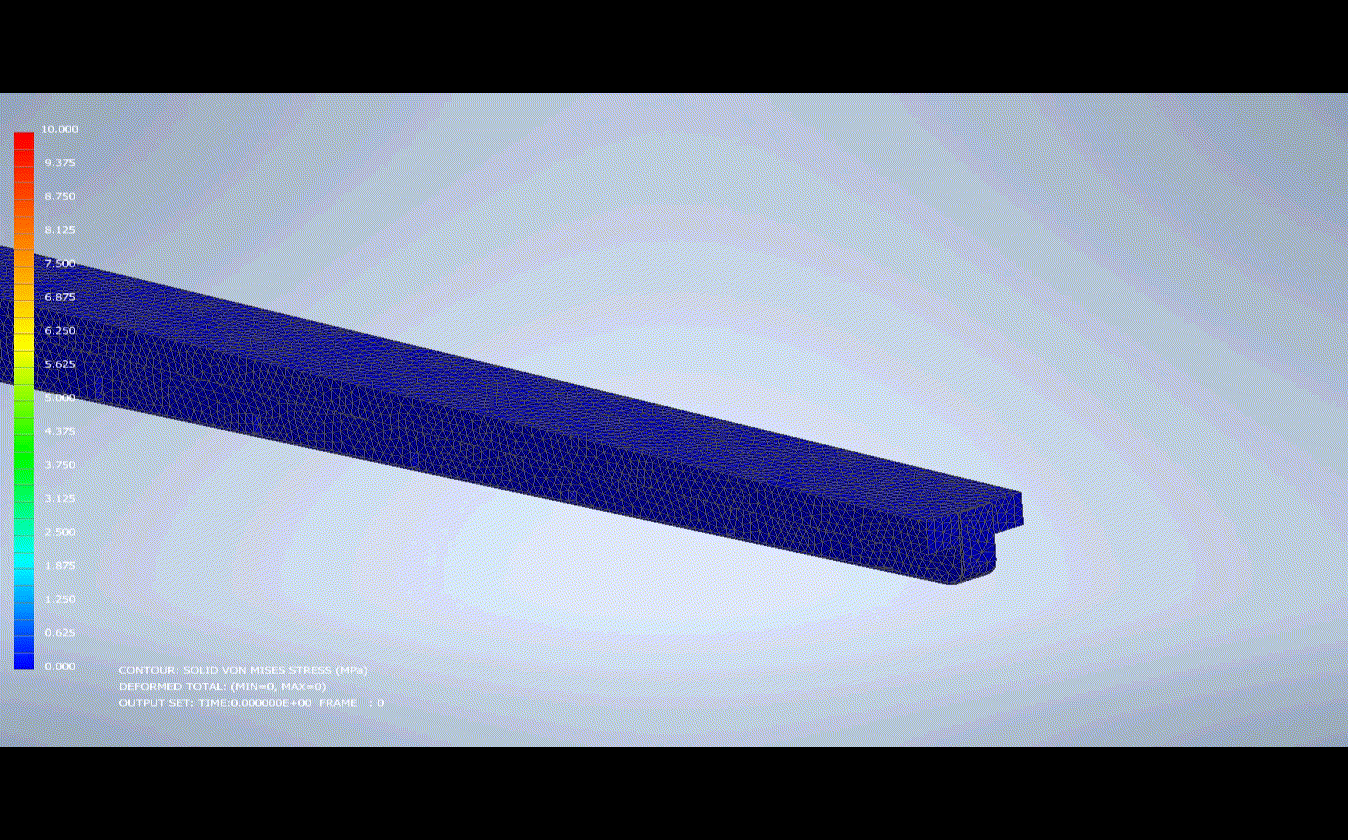
A "research grade" task... experimental reinforcement.
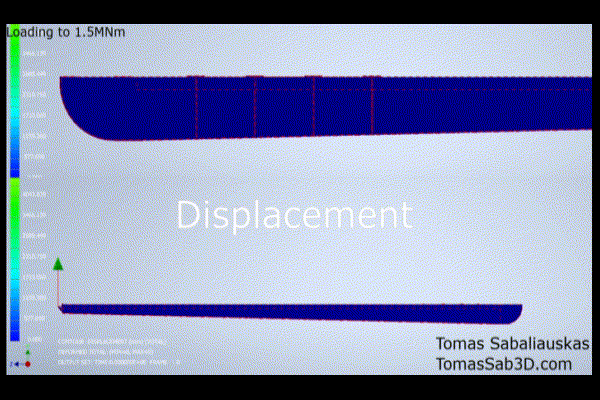
Calibrated for crack propagation.
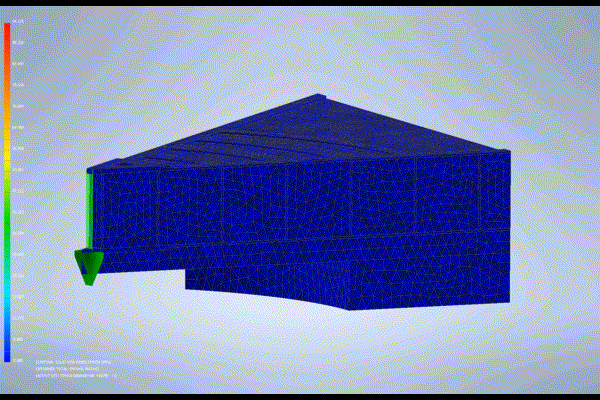
Overkill, but... dynamic load safe.
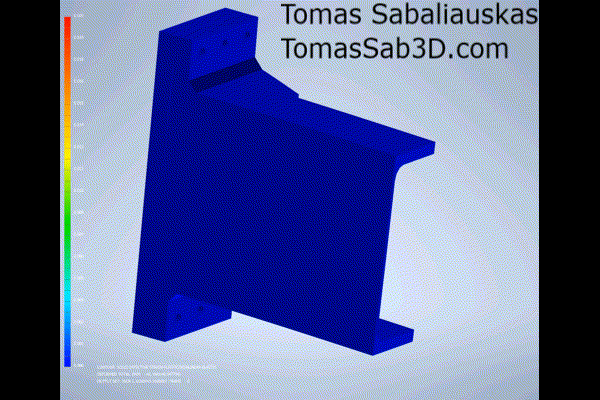
500 ULS cycles... EN3 compatible.
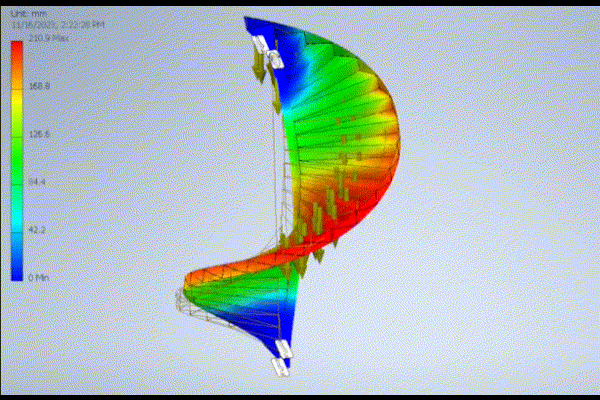
1. Fatigue safe 2. Feels stable (not "shaky"). 3. Certifiable for CE mark.

Natural frequency - below 10Hz is not good.

Stress in ULS case... ok

Displacements...

Manufacturing / production drawings generated...

Frame dynamic response - for shaky engines, and moving parts.

The frequency response is scary bad.

After adjusting, one frequency remains dominant, and is plausible to dampen effectively.
Thermal analysis
Thermal analysis is a BEAST…
Coupled with stress fields, fatigue, gets even harder.
Managing of tasks can benefit from “fast engineering feedback”. It often helps:



